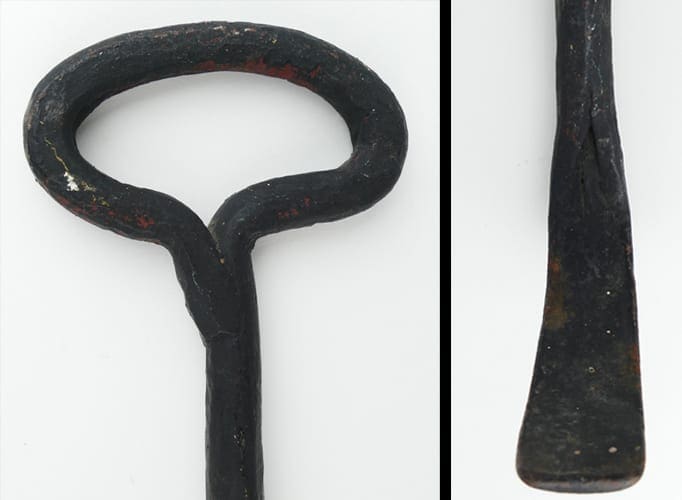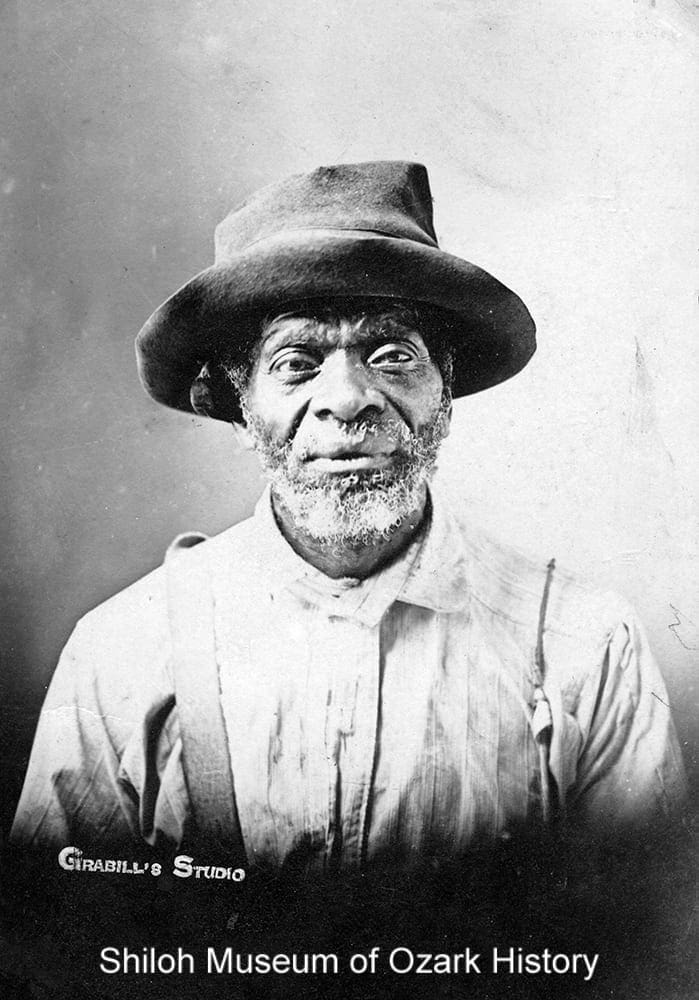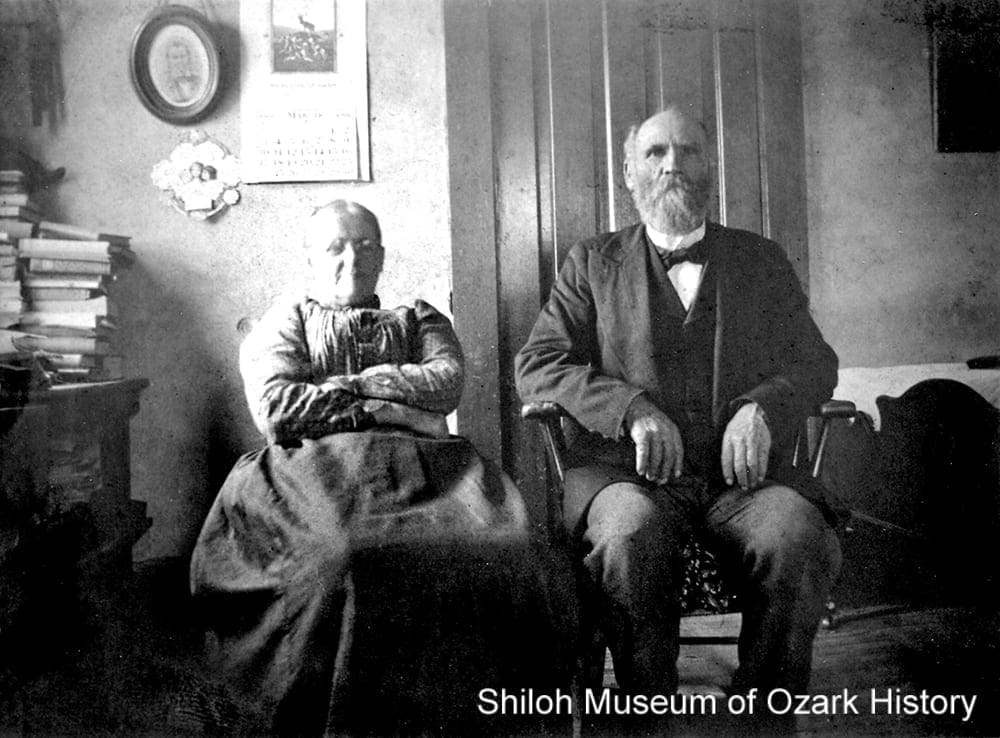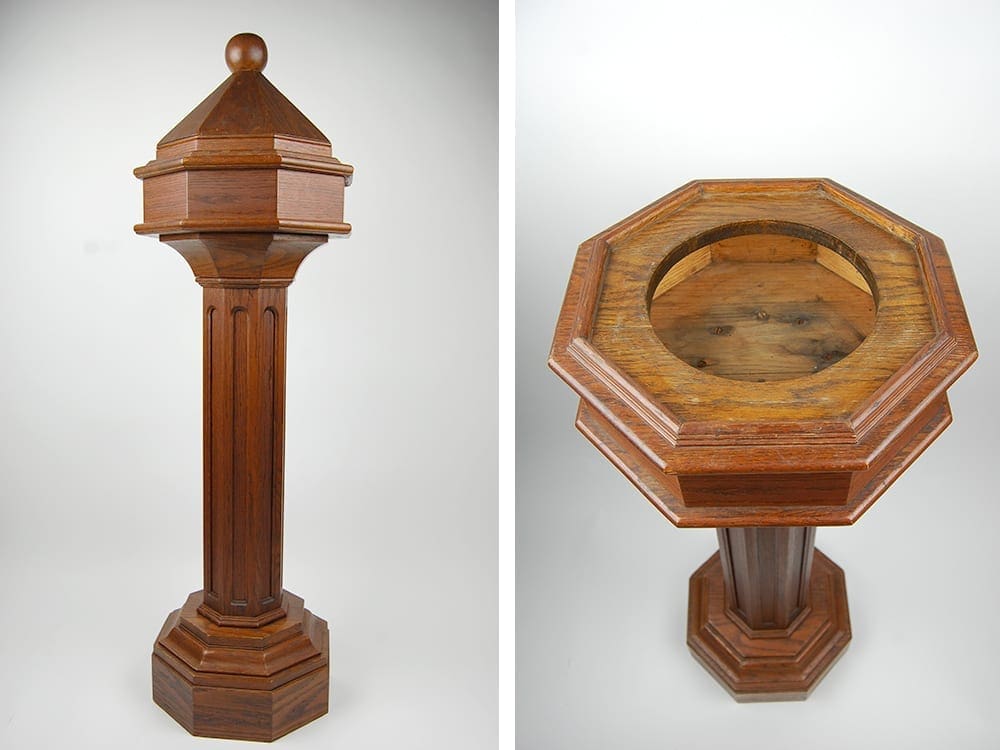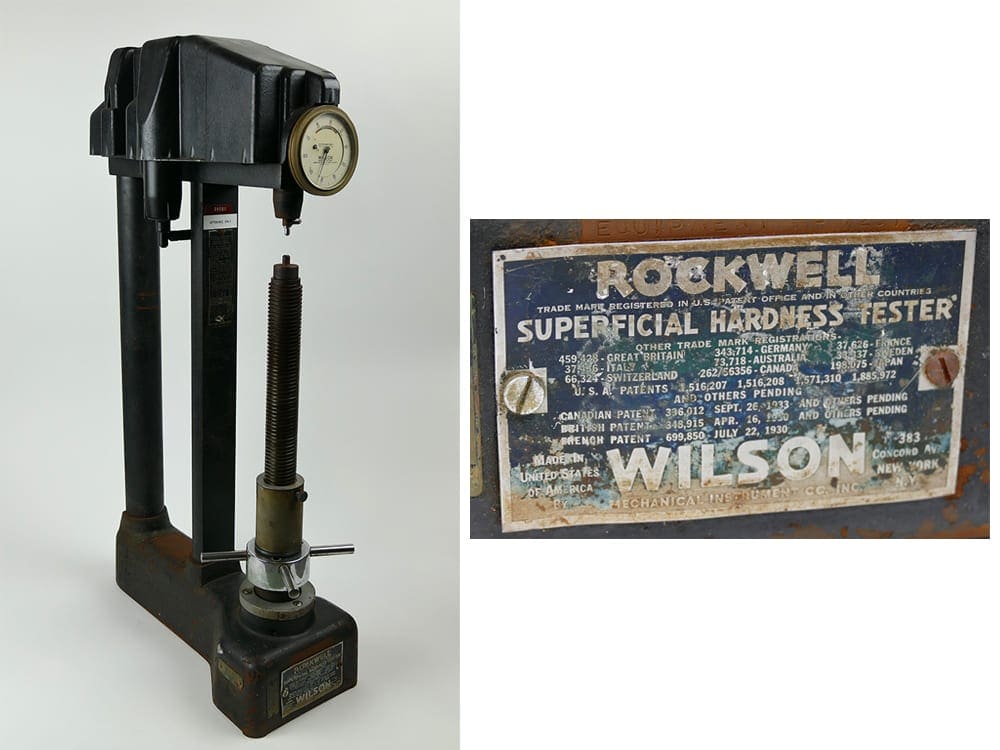
Donated by the Ball Corporation
The Rockwell hardness tester was used to determine the strength, or “hardness,” of metal. Hardness was measured by attempting to put a dent into metal with increasing pressure, with the corresponding hardness number indicated on a gauge. The hardness tester seen here used a conical diamond to make the dent.
The history behind this particular tester is not completely known. Most recently it served at Heekin Can Company in Springdale. However, the tester has a metal tag identifying it as property of the “Defense Plant Corporation” or DPC. The DPC was created in 1940 to help with the war effort during World War II. Various wartime federal agencies would make a request for manufactured goods and the DPC would make sure that factories were able to deliver. Over six years the DPC distributed over nine billion dollars on 2,300 projects across forty-six states and overseas. Most of that money was spent building and equipping new factories and mills, which were primarily leased to private companies.

Metal tag on hardness tester.
The metal tag also has “Frigidaire” engraved on it. Frigidaire Appliance Company made many components during World War II, including propellers, fuel tanks, and machine guns.
Heekin Can Company was founded in Cincinnati, Ohio, by James Heekin in 1901. Son James J. Heekin took over the business in 1904 following his father’s passing. A second plant was added in 1915, and Heekin went on to become the largest regional manufacturer of metal food containers in the U.S., with factories in Arkansas, Illinois, Indiana, Ohio, Pennsylvania, Tennessee, West Virginia, and Wisconsin.
In the 1940s, Springdale was the center of Northwest Arkansas’s agricultural and canning industries. Heekin decided to locate a plant in Springdale to provide packing cans for locally processed fruits and vegetables. On June 4, 1949, the grand opening of Springdale’s Heekin Can Company was met with much fanfare, including speeches by Heekin president Daniel Heekin, Frisco Railroad vice president John Payne, and Arkansas highway commissioner Orval Faubus. The Springdale High School Band and Slim Picken’s Famous Western Band provided musical entertainment as some 4,000 visitors toured the new factory. Free soda pop and fried chicken box lunches were provided for all in attendance.
Heekin remained under family control until 1965 when it was sold to Diamond International to avoid a possible hostile takeover. In 1982 Heekin was sold as an independent company to Wesray Holding Corporation following a hostile takeover of Diamond. Three years later Heekin went public. Ball Corporation acquired Heekin in 1993. Phaseout of operations at the Springdale facility began in 2019, with the final plant closure expected sometime in 2021.
Learn more about Springdale’s Heekin Canning Company and the local canning industry in our Canned Gold online exhibit.


